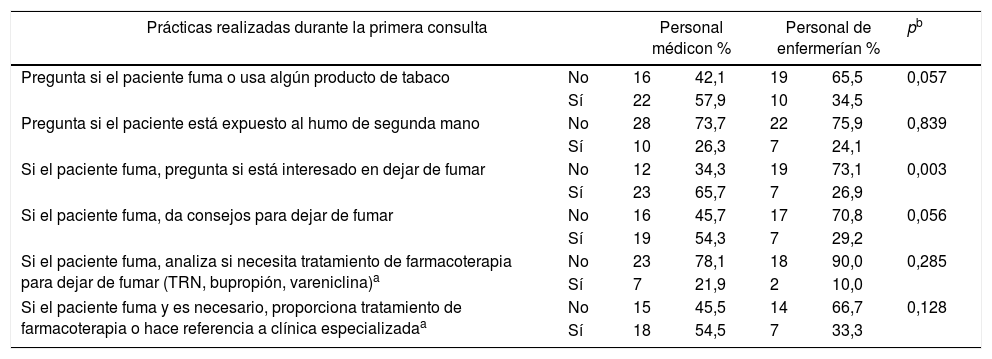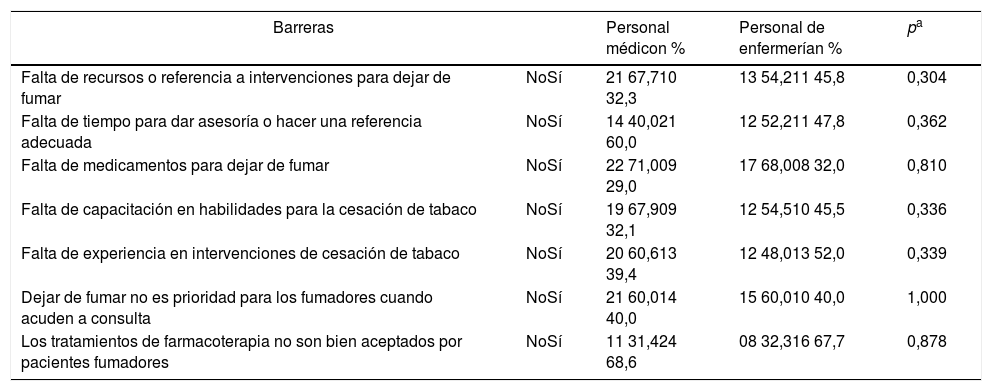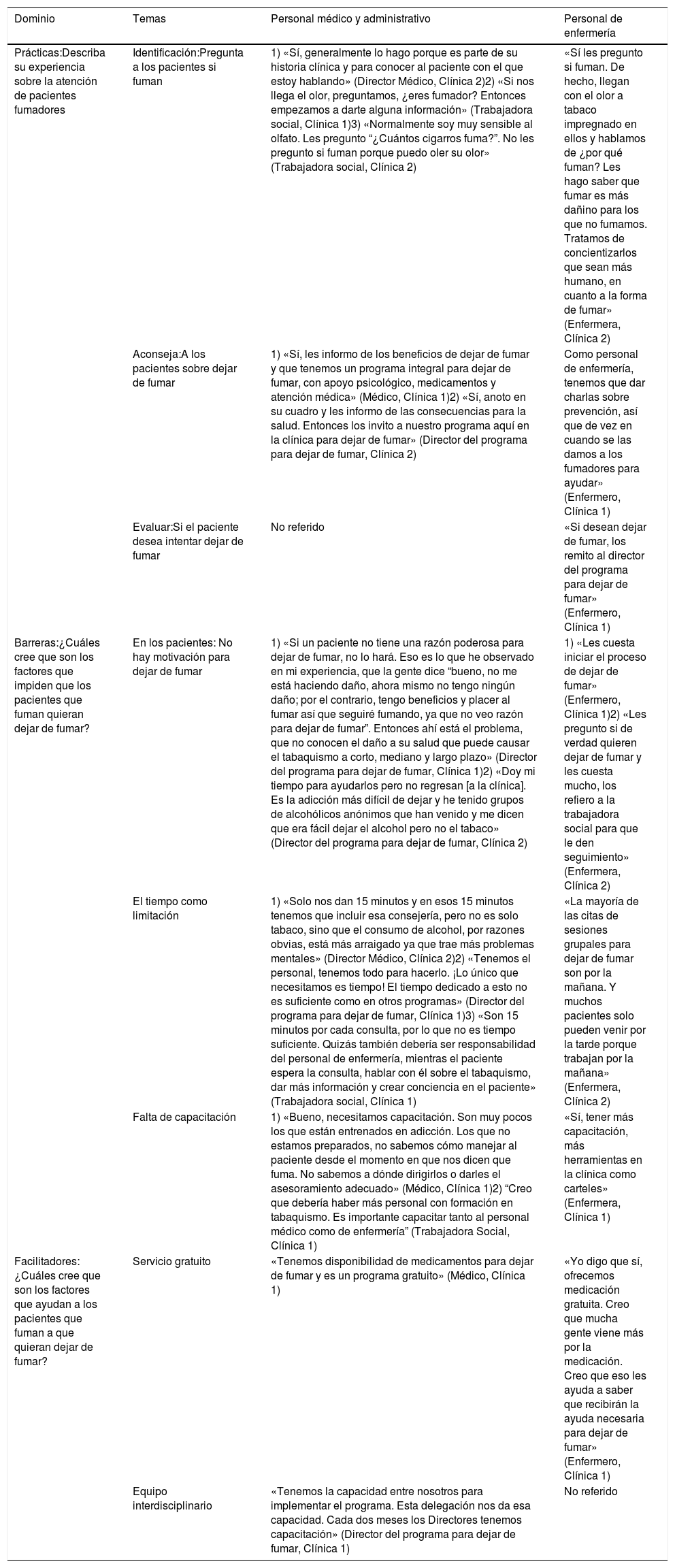Evaluar las prácticas clínicas, barreras y facilitadores para dejar de fumar en clínicas de primer nivel de atención en la Ciudad de México.
Material y métodosDiseño de métodos mixtos. Se realizaron encuestas (n=70) y entrevistas semiestructuradas (n=9) a personal de salud involucrado en el servicio de las clínicas para dejar de fumar.
ResultadosDatos cuantitativos muestran que el personal médico realizó más que el de enfermería las siguientes prácticas: preguntar a pacientes si fumaban (57,9% vs. 34,5%, p=0,057), si tenían interés en dejar de fumar (65,7% vs. 26,9%, p=0,003), brindar asesoría (54,3% vs. 29,2%, p=0,056) y necesidad de farmacoterapia (21,9% vs. 10%, p=0,285). El personal de enfermería informó más que el personal médico la falta de recursos, farmacoterapia y necesidad de capacitación para asesoría. Los resultados cualitativos muestran como barreras: percepción de falta de motivación para dejar de fumar entre pacientes, falta de tiempo en consulta, largos tiempos de espera para citas y falta de capacitación; y como facilitadores: contar con servicio para dejar de fumar, farmacoterapia sin costo, y equipo multidisciplinario.
ConclusionesLas intervenciones para dejar de fumar se implementan parcialmente. Es necesaria una reestructuración de los servicios, donde el personal de enfermería tenga un mayor rol.
To assess the clinical practice, barriers, and facilitators in promoting smoking cessation in primary healthcare clinics in Mexico City.
Material and methodsA mixed method design was used. Surveys (n=70) and semi-structured interviews (n=9) were conducted with health personnel involved in smoking cessation clinics.
ResultsQuantitative data revealed that physicians were more likely than nurses to 1) ask patients if they smoke (57.9% vs 34.5%, p=.057), 2) ask patients if they are interested in quitting smoking (65.7% vs 26.9%, p=.003), 3) provide advice to quit smoking (54.3% vs 29.2%, p=.056), and 4) assess whether pharmacotherapy is needed (21.9% vs 10%, p=.285). Qualitative data showed that nurses were more likely than physicians to report lack of resources to refer patients to smoking cessation services, lack of pharmacotherapy availability, and lack of provider training in smoking cessation. Reported barriers include lack of motivation among patients, lack of time for assessment, long appointment wait times, and lack of training. Reported facilitators include existence of smoking cessation programmes and pharmacotherapy at no cost to the patient, and having a multidisciplinary team.
ConclusionsDue to numerous barriers, smoking cessation interventions are partially implemented in primary care clinics in Mexico City. A restructuring of services is necessary, and nurses should be given a more prominent role.










